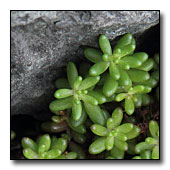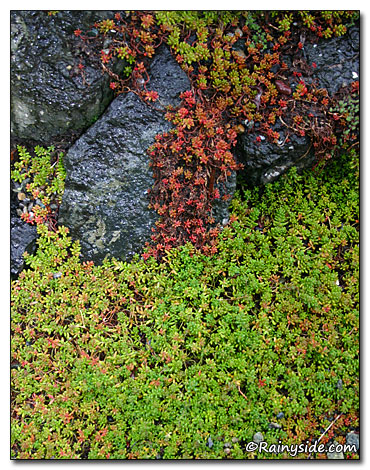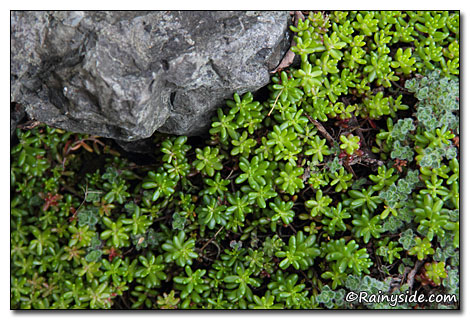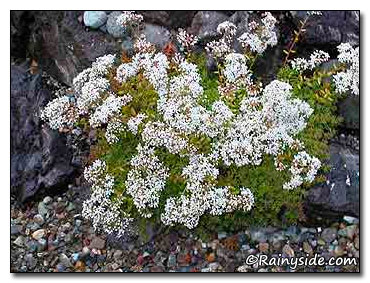Sedum lydium
Family: Crassulaceae
Pronounced: SAY-dum LI-dee-um

Quick Jumps
Growing Guide
Rainy Side Notes
GROWING GUIDE

Origin:
West and Central Turkey, and Western Asia.
Plant Group:
Perennial.
Hardiness:
Sunset zones: All.
USDA zones: 5-8.
Mature size:
Height 2 inches (5 cm).
Width: 8 inches (20 cm).
Flowering period:
Summer.
Flowering attributes:
Corymbs of white, star-shaped flowers on top of flowering stems.
Leaf attributes:
Succulent, evergreen, fleshy green leaves turning bronzy-red in fall.
Growth habit:
Cushion-forming.
Light:
Full sun.
Soil:
Dry, rocky, well-drained soil.
Propagation Methods:
Short stem pieces root readily in garden soil.
Divide in spring.
Rainy Side Notes


Sedum comes from the Latin word, sedo, meaning "to sit." Lydium means "of Lydia," which is a province of Anatolia.
Sedum lydium can be tucked into crannies in rock walls, rock gardens, and in between pavers where there is no foot traffic. This is an easy sedum to grow and very drought tolerant in a shady spot in my own garden. In its native habitat, it prefers to grow in moist soil in subalpine regions. During our summer drought, as well as during the winter, the foliage turns shades of red. The stems will root as they spread along the ground. I like the textures of the small succulent rosette of leaves, hanging precariously at times, against the basalt rock walls. In the photo to the right you can see how tiny the rosettes are in comparison with the woolly thyme (Thymus pseudolanuginosus) creeping into it on the right.
In the shade this little sedum flowers profusely with corymbs full of tiny white flowers in late July to early August. Even though this is a commonly grown ground cover, Sedum lydium has a place of honor as a ground cover between stone pavers that surround John F. Kennedy’s gravesite.
Debbie Teashon
Photographed in author's garden.

Gardening for the Homebrewer: Grow and Process Plants for Making Beer, Wine, Gruit, Cider, Perry, and More
By co-authors Debbie Teashon (Rainy Side Gardeners) and Wendy Tweton
Copyright Notice | Home | Search | Perennials

